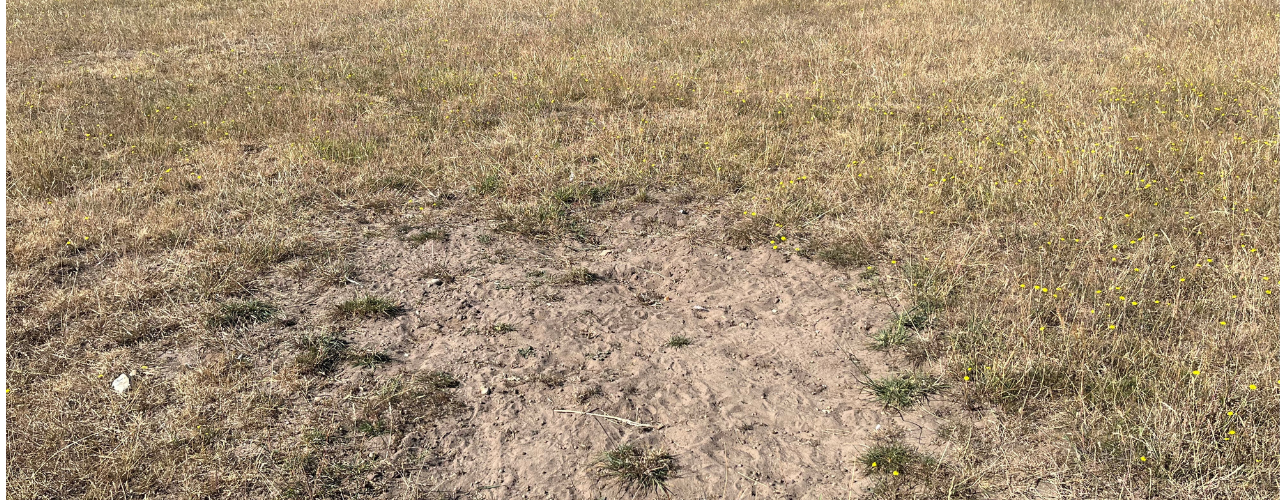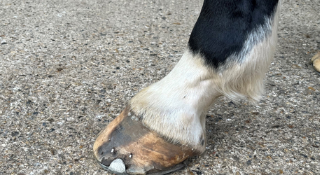
Be sand colic savvy
Keeping your horses on light sandy soil can mean less mud in the winter and easier paddock maintenance come the spring but with it...
13 July 2022
Read More
Wound first aid wrapped up
Horse emergencies needing speedy first aid come in many forms but finding your horse with a bleeding, gaping wound has to be up there at the top of the list of horrors.
Unfortunately, horses are accident prone and appear to be irresistibly drawn towards that one low branch in the paddock or the only broken piece of fencing. They may catch themselves on a sharp flint when rolling, tread on a rogue nail or failing that may be bitten or kicked by an opinionated field companion.
Assess the damage
Identifying and assessing the type of wound and taking the most effective first aid action while you wait for your vet to arrive can make all the difference to successful treatment, repair and recovery. A major puncture wound may look minor on first glance while a superficial cut, flowing with blood may look life-threatening.
Initially you will need to stop the bleeding and carefully clean the wound to assess the full extent of the damage.
Clean the wound
Swabbing
Use water, mild antiseptic and cotton wool gamgee swabs to clean the wound in the first instance. Remember to use a fresh swab each time you gently dab the wound and mop the blood to help prevent infection.
Cold hosing
Hosing can be helpful to clean the wound so that you can take a clearer look at the injury. Make sure you apply the stream of water across the wound rather than directly into the damaged tissue to prevent any foreign bodies being washed deeper into the cut. Gently hosing for around 15 minutes can help to reduce swelling too.
Assess the type of wound
Puncture wounds
The innocuous look of a small puncture wound can belie the danger it may pose. Nails, thorns and other piercing objects can cause deep puncture wounds and the risk of infection can be very high. It’s vital to call your vet as soon as possible. If the foreign body is still in place it is usually best to leave it there until the vet arrives, as long as doing so doesn’t cause it to embed further. Leaving the object in situ will enable the vet to more accurately assess which structures may be damaged and also attend to any excessive bleeding on removal.
Clean-cut wounds
Usually caused by something sharp, a clean-cut wound will often bleed heavily and look horrific. The edges will be neat, but the wound may be deep. It’s important to stop the bleeding as quickly as possible by using a sterile dressing and applying pressure while waiting for your vet to arrive. If blood soaks through the first layer of dressing, don’t remove it – instead add further dressings over the top and apply firm pressure by hand or using a firmly applied bandage over a padding layer (e.g. gamgee).
Lacerations
A jagged, uneven and shallow tear to the skin is usually caused by knocking or becoming entangled with something blunt but hard such as a piece of rogue wood or metal. Although there may not be a profusion of blood there may be a risk of infection and it’s advisable to seek veterinary help promptly.
Abrasions
Abrasions can be the result of a fall, a struggle to get up or a consequence of breaking free from being trapped. While an abrasion may be only skin deep it may cover a large area and it’s crucial to clean the surface meticulously to prevent infection.
Unusual lumps and bumps
Don’t discount any new lumps, bumps or swellings as they may be a sign of a recent injury, bite, sting, bruise or haematoma. In some cases, they could be an indicator of something more sinister affecting tendons, ligaments or the horse’s skeletal frame. If you are worried it’s always best to speak to your vet for professional advice.
Wrapping up the injury
Some wounds may be better off bandaged while others will heal more effectively if left uncovered and some, given their position, may be impossible to bandage!
Superficial cuts, grazes and shallow wounds will usually heal more efficiently if they are kept clean and uncovered. There are many gels and creams available which can help to keep these wounds clean, provide the best environment for healing and deter flies - speak to your vet to find the best one for your horse.
High limb and torso wounds can be tricky to cover but often tend to heal well on their own given the greater circulation of blood at and above the heart level.
Lower limb wounds are more vulnerable to dirt and thus infection and the damage can be exacerbated by movement of the limb. On this basis wounds below the knee or hock are usually better off being bandaged.
Deep wounds affecting all the layers of the skin are at high risk of infection if left exposed. Such wounds may need stitching after which your vet will dress and bandage the limb carefully and show you how to manage the injury while it repairs.
Tetanus
Horses are very sensitive to developing tetanus and any kind of wound can be a way in for this serious and often fatal Infection. It is essential that your horse's tetanus vaccination is up to date. If it has lapsed or the horse has a high-risk penetrating wound such as a nail in the foot you should speak to your vet who may advise a tetanus booster.
If you are in any doubt about the best way to manage a wound it is vital to speak to your vet as soon as possible. Even the smallest wound can cause disastrous consequences if it affects an underlying structure and is not correctly managed from the outset.
While a wound may initially look terrible, the body’s healing process is extraordinary in its capacity to transform severe flesh damage into a small scar in a matter of weeks. With a basic knowledge of wound first aid, owners can give the healing process the best start by providing the right emergency first aid treatment while the vet is on the way.
https://equusmagazine.com/horse-care/horse-wounds-to-bandage-or-not-to-bandage-8483
https://www.bluecross.org.uk/pet-advice/basic-first-aid-horses
MM-10214

Keeping your horses on light sandy soil can mean less mud in the winter and easier paddock maintenance come the spring but with it...
13 July 2022
Read More
The fetlock is a hard-working, high motion hinge joint. It is the meeting point of the cannon bone, proximal sesamoid bones and th...
20 June 2022
Read More